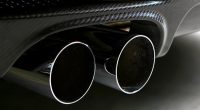Diesel Power Chip: The Importance of Choosing the Right One
Computer technology has become a big part of every day life, and vehicles are no exception. Engines are built with an ECU (engine control unit) that monitors and adjusts the engine’s functions to an array of conditions. However, the ECU not always provides the type of performance the driver is looking to get out of their vehicle. In case you’re running a diesel engine, you should consider a diesel power chip to improve your car’s performance.
Diesel engines rank as engines that have a higher thermal efficiency than any standard external or internal combustion engines, thanks to their high compression ratios. So if you’re looking to further increase the performance of your car, investing in a diesel power chip is the right thing to do. However, it’s worth noting that there are several types of performance chips, which besides providing improved torque and horsepower, they also provide better engine efficiency and the possibility for tuning a car to its driver’s individual style.
Control Module
This is a performance chip used to intercept readings from different sensors to the ECU. It’s plugged directly into the under-hood electrical system and interprets all incoming readings from the sensor and adjusts them based on the parameters needed to improve the performance of the car. The readings include ignition timing and air-fuel ratio. This chip is customized to maximize the efficiency and output of the motor based on the year of the car, the make and the model. Some control modules have different power levels which the driver can select. They can also provide in-car readings, such as engine gas temperature, turbo boost and rpms.

Power Programmers
Unlike the control module, which is connected to the under-hood electrical system, the power programmer is connected to the ODB II port found under the dashboard. The plug-and-play type of performance chips upload a new set of instructions to the car’s ECU depending on the car, the level of power desired and the modifications made. The biggest advantage power programmers offer is allowing the driver to have an extremely high control over the car’s settings. For example, you can re-calibrate some of the engine’s settings based on speed rating, tyre size and rear-end gear ratio.
Engine Management Systems
An EMS takes the performance chips a step further than the aforementioned two. It completely replaces the ECU, so that the drivers have full access to the car’s control system. If a driver wants to tune the drivetrain system, the EMS will permit him. The idle speed, fuel injector ratio, nitrous management and air-fuel ratio can all be customized as well. Installing an EMS chip is very straightforward as well. It’s mounted inside the engine compartment and the wires from the ECU are plugged into the EMS. Performance checks can be done by connecting a laptop to the EMS in order to change settings.



